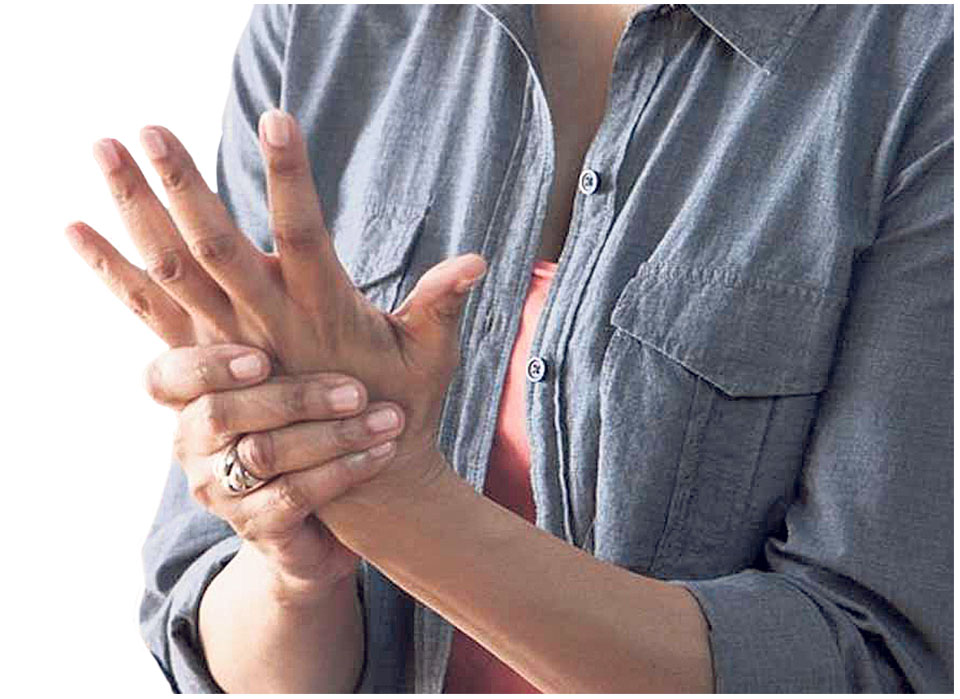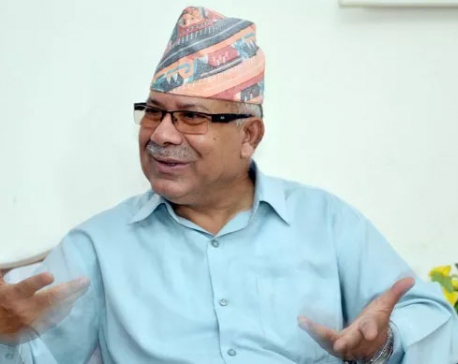
OR
Health Corner

Arthritis is not a single disease but it is actually an informal way of referring to joint pain or joint disease. Though arthritis means joint inflammation, the term is used to describe around 200 conditions that affect joints, the tissues that surround the joint, and other connective tissues. There are more than 100 different types of arthritis and related conditions. And though it occurs more frequently as people get older, people of all ages, sexes and races can and do have arthritis. Even though arthritis is a fairly common ailment, it is not well understood. Dr Arun Kumar Gupta, rheumatologist at Norvic International Hospital in Thapathali, Kathmandu, helps set the facts right.
 Myth #1: Arthritis is seen only in old people or it is considered a normal part of aging.
Myth #1: Arthritis is seen only in old people or it is considered a normal part of aging.
Since the major reason for arthritis is wear and tear in the tissues during chemical changes in the body, it actually has nothing to do with aging. While it may be true that the risk of arthritis increases as you age, this does not normally mean children and youths will never be affected by it. In fact, people of all ages including children and teens can suffer from arthritis. It is not age specific though the main symptoms of arthritis are joint pain and stiffness, which typically worsen with age.
Myth #2: Every joint pain is a sign of arthritis.
One must know that joint pain is not only caused by arthritis. It may be the effects of other numerous conditions as tendinitis (irritations in the tendon muscles), bursitis (a condition where bursae, small fluid filled sacs that cushion the tendons, bones, and muscles near the joints, are affected) or the consequences of injuries in tissues around the joints. So, Dr Gupta suggests getting the required tests done and not coming to a conclusion yourself. Arthritis diagnosis often begins with a primary care physician, who performs a physical exam and may do blood tests and imaging scans to help determine the type of arthritis. An arthritis specialist, or rheumatologist, should be involved if the diagnosis is uncertain or if the arthritis may be inflammatory. Also one need to know that this disease not just affects joints but simultaneously may target the body’s internal organs as well. It totally depends on the individual’s body system and the type of arthritis they are suffering from.
Myth #3: Only heat is suitable for patients with arthritis.
If this were true then everyone living in the warmer regions would never be affected by arthritis. Though maintaining warmth is recommended for patients with arthritis, at times even cold therapies can be beneficial. If heat can relax the muscles and help lubricate the joints, cold is also good when it comes to reducing inflammation. So it is never bad to alternate between hot and cold therapies. Consult your doctor and set a routine according to the type and severity of arthritis you suffer from.
Myth #4: Arthritis patients should not exercise.
Exercise is in itself a part of the treatment that maintains the range of movement and flexibility of the joints. It assists in pain reduction and improves the overall functioning of the body as well. Likewise, burning some calories will lighten the load further lessening the pressure on your joints. Thus the concept that arthritis patients shouldn’t exercise couldn’t be further from the truth. However, patients should not overdo it and know their limits as well. Do not forcefully push yourself to do high-intensity interval trainings or aerobic exercises. It would be best to stick to light stretching and only exercise as much as your body allows you to. Overtime when you find that your joints are no longer stiff, you can increase the intensity and length of your workout regime accordingly.
Myth #5: Diet has nothing to do with this disease.
It is rightly said that you are what you eat. Regulation in your food habit may not completely cure the disease but it will certainly bring some improvements. Healthy eating habits minimize the frequency of attacks and will prevent your internal organs from being damaged. Dr Gupta recommends arthritis patients to avoid fried or processed foods, high-fat dairy products, alcohol, and food with high amount of sugar and carbs. Instead, stick to citric food, vegetables, whole grains, fruits, nuts, and seeds.
Myth #6: Arthritis can be completely cured.
There are different types of arthritis, each with its own distinct symptoms and effects. Due to this, the treatment procedures may also differ from one another. And while arthritis can be managed to a large extent, it cannot be fully cured. However, early diagnosis and appropriate management can help reduce pain and complications of the disease. Dr Gupta advises his patients to maintain a healthy diet and be regular with their medications and treatments even when the symptoms seem to have lessened. Treatment is what will control pain, minimize joint damage, and improve or maintain quality of life.
You May Like This

Indu Shankar sugar mill starts clearing its dues owed to farmers
SARLAHI, April 7: Indu Shankar Sugar Industry of Sharlahi has started clearing its long outstanding dues of sugarcane farmers. ... Read More...

Clearing that congestion
For many, a stuffy nose has been this seasons’ most common health problem. Not only does it make breathing difficult... Read More...

Elections will clear confusions in constitution enforcement: Nepal
ITAHARI, Oct 21: CPN (UML) leader and former Prime Minister Madhav Kumar Nepal has said confusions seen in the enforcement... Read More...

Just In
- Indians vote in the first phase of the world’s largest election as Modi seeks a third term
- Kushal Dixit selected for London Marathon
- Nepal faces Hong Kong today for ACC Emerging Teams Asia Cup
- 286 new industries registered in Nepal in first nine months of current FY, attracting Rs 165 billion investment
- UML's National Convention Representatives Council meeting today
- Gandaki Province CM assigns ministerial portfolios to Hari Bahadur Chuman and Deepak Manange
- 352 climbers obtain permits to ascend Mount Everest this season
- 16 candidates shortlisted for CEO position at Nepal Tourism Board







_20220508065243.jpg)










Leave A Comment